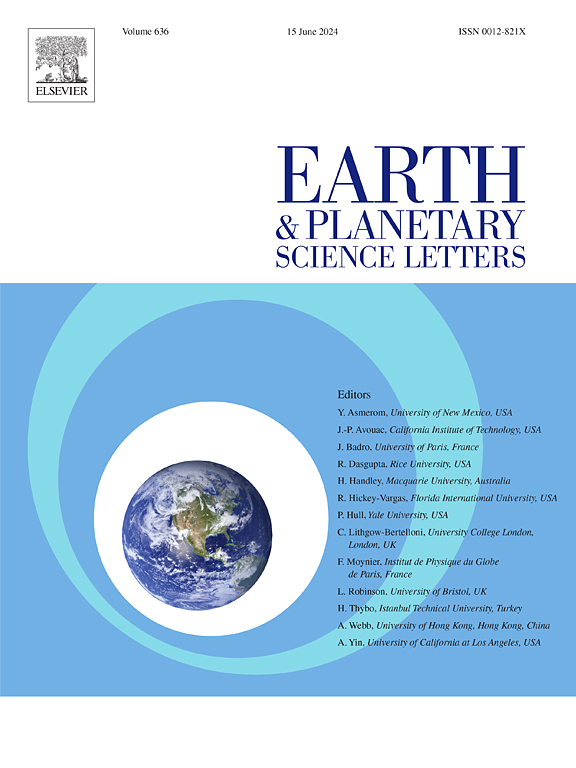Cadmium isotopes as a tracer for deep carbon recycling
IF 4.8
1区 地球科学
Q1 GEOCHEMISTRY & GEOPHYSICS
引用次数: 0
Abstract
Global marine carbonates have cadmium (Cd) concentrations much higher than those of mantle peridotites, and especially, Phanerozoic carbonates are uniquely characterized by heavier Cd isotopic composition (expressed as δ114/110Cd against NIST 3108) relative to the mantle. These characteristics make the Cd systematics potentially useful for tracing recycled carbonates in the mantle. We test the feasibility of this application through analyses of seventeen well-characterized Cenozoic intraplate basalts from Eastern China, and for comparison, six mid-ocean ridge basalts (MORB) are also investigated. The MORB have a mean δ114/110Cd value of 0.13 ± 0.04 ‰ (2sd), in accord with previous analyses for other MORB, illustrating a relatively homogeneous Cd isotopic composition of global MORB and the depleted upper mantle. The Eastern China basalts have δ114/110Cd values varying between 0.17 ± 0.05 ‰ (2sd) and 0.65 ± 0.05 ‰ (2sd), which are slightly to notably higher than those of the mantle and MORB. The maximum δ114/110Cd offset (∼0.5–0.6 ‰) between these basalts and the mantle fairly exceeds the magnitude of Cd isotope fractionation even at low degrees of partial melting. The high δ114/110Cd values cannot also be explained by volatilization-induced Cd loss, given the positive correlation between δ114/110Cd and Cd concentrations. Instead, this correlation points to a key role of recycled carbonates, supported by the “carbonated” geochemical signals of these basalts (e.g., low Ti/Eu ratios). Binary mixing model indicates that recycling of approximately 2–10 % carbonates into sources can explain the high δ114/110Cd observed in these basalts. Given that Cd is a trace element in the mantle (∼38 ng/g), the Cd isotopic composition of mantle rocks is sensitive to even a tiny amount of recycled carbonates. Therefore, we propose for the first time that Cd isotopes are a new and powerful tool of tracing Earth's deep carbon recycling over geologic time.
求助全文
约1分钟内获得全文
求助全文
来源期刊

Earth and Planetary Science Letters
地学-地球化学与地球物理
CiteScore
10.30
自引率
5.70%
发文量
475
审稿时长
2.8 months
期刊介绍:
Earth and Planetary Science Letters (EPSL) is a leading journal for researchers across the entire Earth and planetary sciences community. It publishes concise, exciting, high-impact articles ("Letters") of broad interest. Its focus is on physical and chemical processes, the evolution and general properties of the Earth and planets - from their deep interiors to their atmospheres. EPSL also includes a Frontiers section, featuring invited high-profile synthesis articles by leading experts on timely topics to bring cutting-edge research to the wider community.
 求助内容:
求助内容: 应助结果提醒方式:
应助结果提醒方式:


